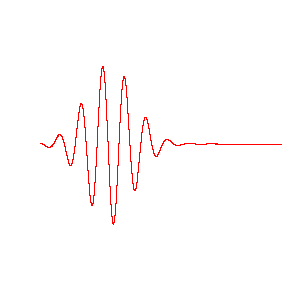
Posted on 09/26/2012 7:22:19 PM PDT by lbryce
Like photographers assembling a portfolio of best shots, astronomers have assembled a new, improved portrait of mankind's deepest-ever view of the universe.


Called the eXtreme Deep Field, or XDF, the photo was assembled by combining 10 years of NASA Hubble Space Telescope photographs taken of a patch of sky at the center of the original Hubble Ultra Deep Field. The XDF is a small fraction of the angular diameter of the full moon.
The Hubble Ultra Deep Field is an image of a small area of space in the constellation Fornax, created using Hubble Space Telescope data from 2003 and 2004. By collecting faint light over many hours of observation, it revealed thousands of galaxies, both nearby and very distant, making it the deepest image of the universe ever taken at that time.
The new full-color XDF image is even more sensitive, and contains about 5,500 galaxies even within its smaller field of view. The faintest galaxies are one ten-billionth the brightness of what the human eye can see.
“Quantum entanglement occurs when particles such as photons, electrons, molecules as large as buckyballs,[1][2] and even small diamonds[3][4] interact physically and then become separated; the type of interaction is such that each resulting member of a pair is properly described by the same quantum mechanical description (state), which is indefinite in terms of important factors such as position,[5] momentum, spin, polarization, etc.
According to the Copenhagen interpretation of quantum mechanics, their shared state is indefinite until measured.[6] Quantum entanglement is a form of quantum superposition. When a measurement is made and it causes one member of such a pair to take on a definite value (e.g., clockwise spin), the other member of this entangled pair will at any subsequent time[7] be found to have taken the appropriately correlated value (e.g., counterclockwise spin). Thus, there is a correlation between the results of measurements performed on entangled pairs, and this correlation is observed even though the entangled pair may have been separated by arbitrarily large distances.[8]
This behavior is consistent with quantum mechanical theory and has been demonstrated experimentally, and it is accepted by the physics community. However there is some debate[9] about a possible underlying mechanism that enables this correlation to occur even when the separation distance is large. The difference in opinion derives from espousal of various interpretations of quantum mechanics.
Research into quantum entanglement was initiated by a 1935 paper by Albert Einstein, Boris Podolsky, and Nathan Rosen describing the EPR paradox[10] and several papers by Erwin Schrödinger shortly thereafter.[11][12] Although these first studies focused on the counterintuitive properties of entanglement, with the aim of criticizing quantum mechanics, eventually entanglement was verified experimentally,[13] and recognized as a valid, fundamental feature of quantum mechanics. The focus of the research has now changed to its utilization as a resource for communication and computation. ...”
“There are two problems with classical big bang theory. We have the
cosmic background radiation that is even to one part in 10^5. So that
means that every part of the Universe in the past came to an agreement
that every part should have the same temperature at 100,000 years
after the big bang (this is the time when light would be free from
getting gobbled up by ions).
The horizon problem is that the stuff of the Universe was too far
apart from each other to reach such an agreement. The separation was
more than a particle traveling at the speed of light could cover.”
http://www.physicsforums.com/showthread.php?t=168811
Yeah. It's called YOU.
Well, I kinda do. :-)

Never mind.

I think this amazing person might have the answer to everything:
http://www.youtube.com/watch?v=dVpg5pqroG0
Here’s a good explanation (w/ animation) of why there is no center of the universe’s expansion. That everywhere can be considered the center —this link is for real :)
http://www.youtube.com/watch?v=i1UC6HpxY28
>> Is that a photograph of how the universe looks now, at this time, or is it a photograph of how the universe looked millions of years ago? <<
It is a photograph of how the universe (or part of it) looked to the camera when the photo was taken.
Different objects in the photo are images of how the various object appeared at different times in the past since they are all at different distances from the camera.
Thanks lbryce, and an ‘extra, extra’ ping to APoD members.
About the eternal torment he's suffering now... is that what you're getting at?
Does that get your juices flowing?
Ken H:About the eternal torment he's suffering now... is that what you're getting at?
Does that get your juices flowing?
Apparently it does yours. Do you think you're God?
Because if you are, then I worship Satan.
See you around, "God".
Check out post # 29 , you may need to get another keyboard and PC screen after this... but, you will love it... going to send you the link in a moment...
!
It was a photo of a hot woman. I want, but the mods don’t. Meanies.
It’s amazing. 40 years ago it was a point of shame but with the socialists it’s a point of honor - they get away with their crimes.
I didn’t get the sense at all that workerbee meant anything diabolical (pun intended)with his comments about Carl Sagan, but I still thought what you said was very funny.
That’s cute. I’ve actually built a working quantum encrypted link and spent considerable time studying the D-wave technology.
Disclaimer: Opinions posted on Free Republic are those of the individual posters and do not necessarily represent the opinion of Free Republic or its management. All materials posted herein are protected by copyright law and the exemption for fair use of copyrighted works.